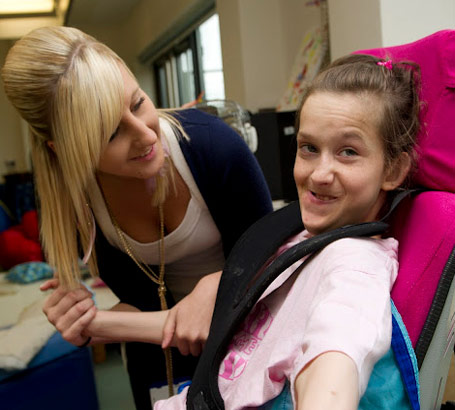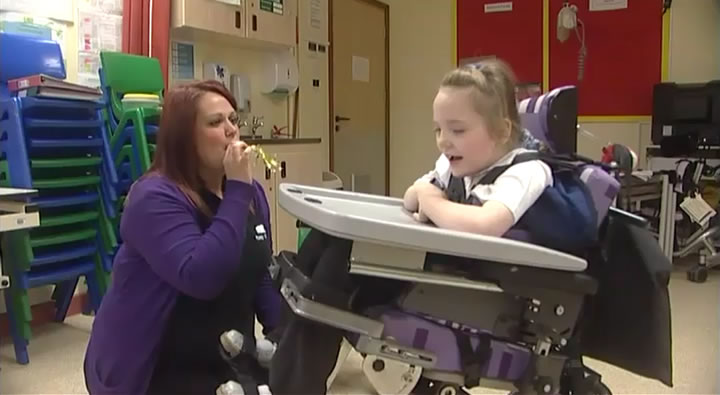In effect, we need to make assessments of children’s learning in order to:
- Monitor their understanding;
- Provide information about their achievements;
- Evaluate and improve educational provision;
- Inform future planning;
- Improve teaching and learning opportunities.

Children with PMLD may not intentionally communicate.
We have to interpret their facial expressions, vocal sounds, body language and behaviour to understand what they need or feel.
Some may make use of a small number of spoken words, gestures, pictures and/or signs to communicate basic needs.
Many children with PMLD do not understand what people say
to them and rely heavily on context and visual clues in familiar situations and routines.
This video shows Leanne, a teaching assistant, working with Alice,
a seven year old pupil. The focus of the work shown is upon trying to elicit strong like or dislike responses from Alice in
relation to specific stimuli.
Alice clearly likes the party blower. However, her behaviour is quite different when presented with a drink of milk. So why
did Leanne present milk a second time? The reason is that Alice will often react this way in response to any new stimulus
and Leanne presented milk a second time just to make sure that this was a genuine dislike.
